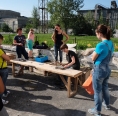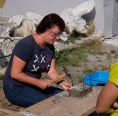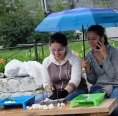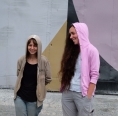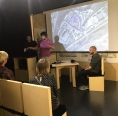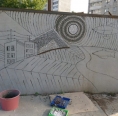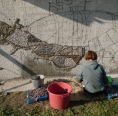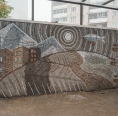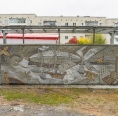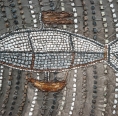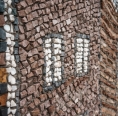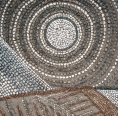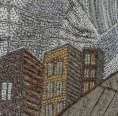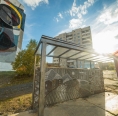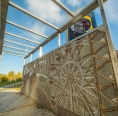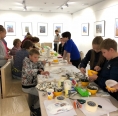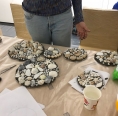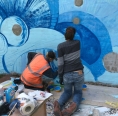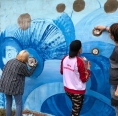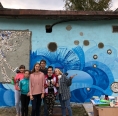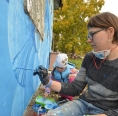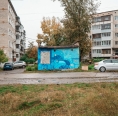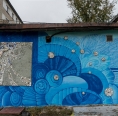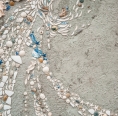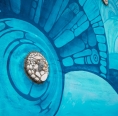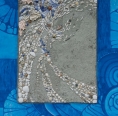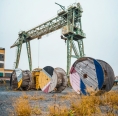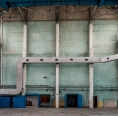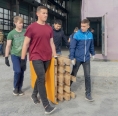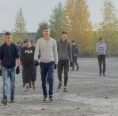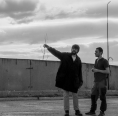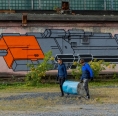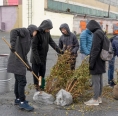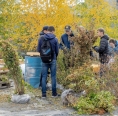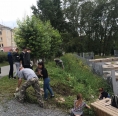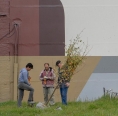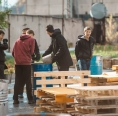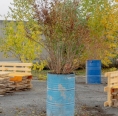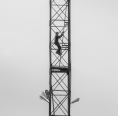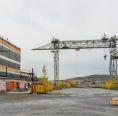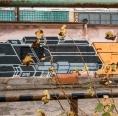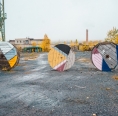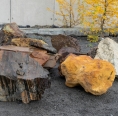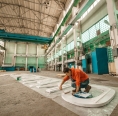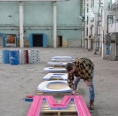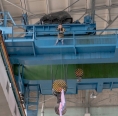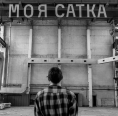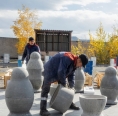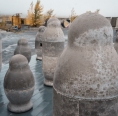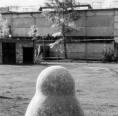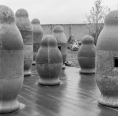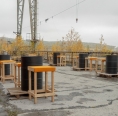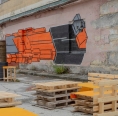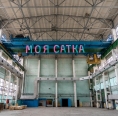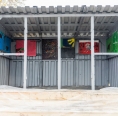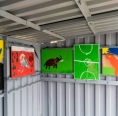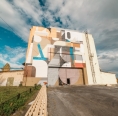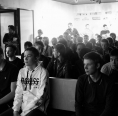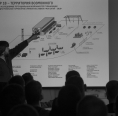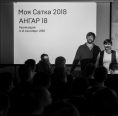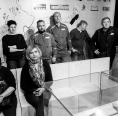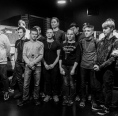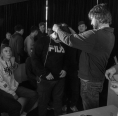-

MY SATKA HAS A HOME
-
Address:
-
Partners:
In August-September-October the town hosted "My Satka" festival of urban development which participants included artists, designers and architects from Moscow, Krasnoyarsk, Ekaterinburg and Chelyabinsk as well as foreign guests actively supported by the town volunteers.
More than twenty-day marathon on creation of two side monumental decoration of the public taxi bus stop in Zapadny microdistrict held by Moscow muralists Maria Volokhonskaya and Maria Laricheva was accompanied by activities of Street Mosaic School − open lessons, work with the material, open-air practice.
It resulted in two mosaic boards of the total area of 25 square metres devoted to the metaphysics of spatial movement. The mosaics are made from the minerals found in Satka region: apart from magnesite and dolomite usual and well-known to Satka people by industrial sites and dumps, siderite, brucite, iron clay and even exotic bauxite − the source of aluminium and rare metals − are found here.
The taxi bus stop project is developed by Moscow architect Dmitry Baryudin, already known to Satka people by the architecture of "Magnezit" museum, wooden sphinxes decorating the banks of the town pond and Ruina square enclosed with mesh walls.
Another monumental object − mosaics of Aleksandra Spiridonova, a graduating student of Stroganov Academy − was carried over with the help of volunteers to the wall of a transformer vault in the centre of Satka. The brilliant general formula of the decoration allowed the volunteers to make their own creative contribution.
At the end of October 2018, a sculpture made by Alexey Luchko, known in the street art world as Luka, appeared near the lower gate of Magnezit Group industrial site leading to the former BelAZ repair shop. The combination of the textures of the seven-metre architecton made of two cubes placed one on another reminds Satka people about the stalls used to be a part of urban landscape not long ago.
Luka's piece of architecture will mark the entrance to the territory which starting from this year will become a driver of urban changes in Satka. Famous BelAZ repair Hangar already valued by the town people on the Steel Worker Day and the surrounding area will become a place of cultural activities of the town and Magnezit Group starting from the beginning of summer.
To examine the potential of the site and sum up all ideas of the last years on its development, "Hangar 18" project workshop was organized in the beginning of August which gathered architects Dmitry Baryudin, Mikhail Labazov and curator of the festival architectural part Egor Larichev, the writer of these words.
In addition to the area development concept for the next year, an action plan on ‘shock’ humanization of the area in the scope of the festival 2018 was prepared. The façade of the large Hangar building was decorated by Luka’s graphic art, the lighting tower − with abstract pattern of Zedz, a Dutch artist, whose robots also decorated the side face of the hangar. Colour cable reels appeared in the surrounding area. During already traditional Pere-satka campaign, a group of dendrologists of the Chelyabinsk State University headed by Vera Viktorovna Merker and Satka volunteers tubbed the plants to be used for ‘green navigation’ in the area surrounding the Hangar. Oxygen Cabin appeared in front of the Hangar. It is a small gallery of street art with step amphitheatre made by Denis Ilbeykin, a wood craftsman from Sovetskaya Gavan town. The first exhibition was the personal show of Vasya Suslov, an eight-year old Satka artist inspired by German street artist Hendrik.
"Two Spirits" sculptural group by Swiss sculptor Florian Graf, the participant of the 4th Industrial Biennale in Ekaterinburg, manufactured from refractory concrete by the Department of Innovative Products of Magnezit Group, made as anthropomorphous columns resembling a matrioshka doll and installed in the framework of the festival, were silently but as if sympathetically watching the collective efforts of the festival participants on rearrangement of the area near the Hangar. Silent stones of the garden also arranged here seemed to be waiting for their turn to talk to Satka people. Tables and chairs from pallets, "U Robota" open bar, a large bench near the Hangar entrance completed the picture of instantaneous landscaping full of spontaneity, hedonism and belief in the possibility of changes.
The final of the festival turned to be symbolical: Alexsandr Zakirov, an abstract artist from Krasnoyarsk, installed, with physical support of the festival curator, letters "My Satka" on a travelling bridge inside the Hangar. So, the fact was symbolically established: now Satka festival has its home and, to be precise, not just a home, but an entire Hangar. As for the exact meaning of the symbol, we will know it soon. ‘The experience of spontaneous humanization of a post industrial area’ turned to be exceptionally productive. Thanks to all of you!
This year, the festival was held under the support of Satka Municipal Administration, "Sobranie" Cultural Initiative Supporting & Preservation Fund and the President Grants Fund.
Egor Larichev
Photo by Alexander Andrievich, Denis Shakirov, Vasily Maksimov, organizers.
-
26.08 - 26.08
DIARY OF THE THIRD INDUSTRIAL BIENNALE
-
28.11 - 28.11
MY SATKA FESTIVAL WINS THE CONTEST OF CORPORATE VOLUNTEER PROJECTS
-
13.10 - 15.10
COOPERATION WITH VGIBL NAMED AFTER M.I. RUDOMINO

